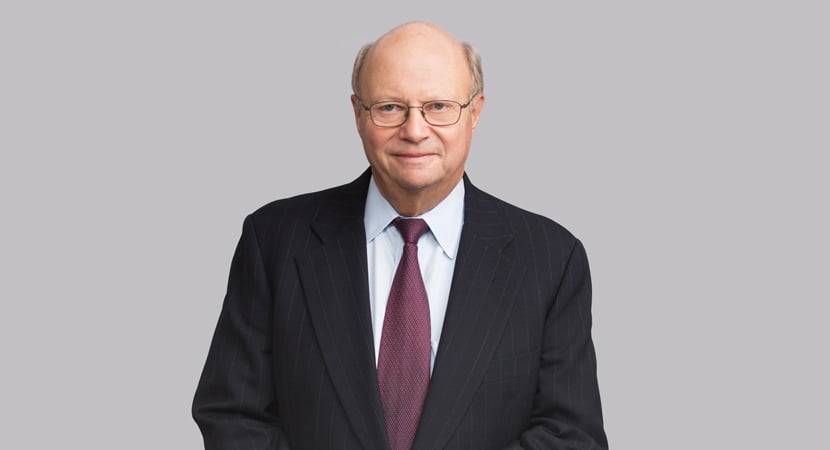District court grants temporary restraining order enjoining release of Age of Hobbits film, finding that plaintiffs were likely to succeed on their trademark claims related to plaintiff’s motion picture The Hobbit.
Defendant The Global Asylum, Inc., is a film production company that produces, among other things, “mockbusters,” which are cheaper parodies of major films that often have titles very similar to major releases. Plaintiffs, Warner Brothers Entertainment, Inc., New Line Cinema and Metro-Goldwyn-Mayer Studios, Inc., and others related to the production and distribution of motion pictures based on the novels of J.R.R. Tolkien, including The Hobbit: An Unexpected Journey, as well as plaintiff, The Saul Zaentz Company, which owns various trademarks that include the word “Hobbit,” filed a trademark infringement suit against defendant seeking (among other remedies) a temporary restraining order (TRO) enjoining the distribution of defendant’s film Age of Hobbits, which had been set for release on December 11 (three days prior to the release of The Hobbit). Defendant insisted that Age of Hobbits – which was set to be released on DVD, Blu-ray and the Internet – had nothing to do with Tolkien’s characters of the same name, but rather was about a group of prehistoric humans living in what is now Indonesia. On December 10, the district court granted plaintiffs’ motion for a TRO enjoining the release of defendant’s film under the title Age of Hobbits, finding that plaintiffs had satisfied the four-factor test for injunctive relief – they had shown (1) likelihood of success on the merits, (2) likelihood of irreparable harm to them if the injunction were not granted, (3) a balance of hardships favoring plaintiffs and (4) that an injunction would benefit the public.
With respect to plaintiff’s likelihood of success, the court first noted that in order to prevail on the merits of their infringement claim, plaintiffs would have to show (1) a protectible ownership interest in the subject trademark and (2) that defendant’s use of the mark was likely to cause consumer confusion. Applying this test, the court first found that plaintiffs had a protectible interest in the “Hobbit” mark because it had been registered in various forms with the Patent and Trademark Office, including one registration for the mark’s use on “printed matter.” Since plaintiffs had not shown that the trademark had been registered for use in movie titles, the court also explored whether the “Hobbit” mark had gained secondary meaning in the marketplace, and concluded it had, citing to evidence (submitted by the plaintiffs) that about half of 400 randomly selected survey respondents associated “Hobbit” with Tolkien’s works. The fact that plaintiffs had extensively used the word “Hobbit,” including in three prior Lord of the Rings films, constituted additional evidence of secondary meaning.
In determining whether defendant’s use of the mark was likely to cause consumer confusion, the court applied the eight-factor test, noting that, under Ninth Circuit precedent, the most important of these factors were the strength of the mark, the relatedness of the goods and the marketing channels used. The court found the “Hobbit” mark to be strong because the word “Hobbit” originated with Tolkien and was invented to describe fictional creatures in his novels. The two films at issue, plaintiffs’ The Hobbit: An Unexpected Journey and defendant’s Age of Hobbits, competed for an overlapping audience (an audience interested in feature-length fantasy films), particularly since defendant deliberately selected a release date for its film that predated the release date for plaintiffs’ film by three days. The court did not discern a meaningful distinction in the fact that plaintiffs’ motion picture was being distributed to movie theaters worldwide, whereas defendant’s film was being released on DVD, Blu-ray and the Internet. Noting that both films were being marketed on the Internet and that this Internet marketing did carry the risk of consumer confusion, the court concluded that the “marketing channels” factor was nonetheless weak because Internet marketing is ubiquitous and utilized by almost all marketers of goods and services. Analyzing the other factors in the eight-factor test, the court noted that the imagery attendant to the use of “Hobbit” in defendant’s film marketing was similar to that depicted in plaintiffs’ film, including a “character holding mythical weapons and mythical creatures such as dragons, battle scenes, mountains and fire[.]” The court also found some evidence of actual confusion among customers, pointing to a weekly tracking study conducted by Nielsen National Research Group in which about 30 to 40 percent of 1,200 respondents exhibited confusion about the source of Age of Hobbits. The court also found that defendant intended to deceive customers and deemed “disingenuous” defendant’s claim that its movie is unrelated to Tolkien’s works, noting that defendant was a proprietor of “mockbusters” and that no evidence existed that defendant actually marketed Age of Hobbits as being about a prehistoric group of people who lived in Indonesia. The court also noted defendant’s choice of a release date so close to that for The Hobbit. Ultimately, the court found that many of the eight factors supported a finding of likelihood of confusion and that none of the factors weighed against such a finding.
Given that plaintiffs had shown consumer confusion and a protectible interest in the “Hobbit” mark, the court assessed whether the defendant had a valid defense to plaintiffs’ trademark infringement claim and found that none of the three defenses that defendant asserted – (i) that it was permitted to use “Hobbits” in the title of its film pursuant to the test articulated in the Second Circuit’s decision in Rogers v. Grimaldi, (ii) that its use of the mark constituted nominative fair use and (iii) that the “Hobbits” mark was sufficiently generic – had any merit.
Under the Rogers test, the defendant must establish (1) the mark used in the title has relevance to the defendant’s artistic work and (2) the title does not mislead as to the source or content of the work. Additionally, under the Ninth Circuit’s decision in Mattel, Inc. v. MCA Records, the mark must have acquired expressive meaning beyond the source from which it originated (in this case, the works of Tolkien). The court found only this last of the factors to be satisfied in this case. While the “Hobbits” mark has acquired expressive meaning beyond the works of Tolkien, the use of the mark has no artistic relevance to the defendant’s underlying work and in fact misleads consumers as to the source of the work. In order to satisfy the artistic relevance prong, defendants had to be using the mark to reference Tolkien’s works or characters while also using the mark in a way that was artistically relevant to defendant’s own film, but defendants disclaimed any intention of referencing Tolkien’s works or characters, instead claiming that “Hobbits” referred to the prehistoric people in Indonesia. The court also found that the defendant’s use of the “Hobbits” mark was misleading based on the strong likelihood of confusion among consumers that it believed existed.
The court also rejected the defendant’s nominative fair-use defense, which is available when a defendant uses a mark to describe the plaintiff’s product rather than the defendant’s own product, since the defendant “has clearly stated that it in no way intended to refer to plaintiffs’ mark by using the trademarked term.” Finally, the court rejected defendant’s contention that “Hobbits” was generic, noting that a federally registered mark (such as “Hobbits”) was presumed not to be generic, and that the defendant had failed to adduce evidence showing that consumers view “Hobbits” as a generic term disassociated from the works of Tolkien.
Having dispatched defendant’s defenses and concluding that plaintiffs were likely to succeed on their infringement claim, the court considered the remaining factors in support of the TRO. The court found that irreparable harm was presumed since plaintiffs had established a likelihood of confusion. According to the court, “[t]his is because it is reasonable for a court to assume that continuing infringement will leave the plaintiff with a loss of control of its reputation and a loss of its goodwill.” The court rejected defendant claim that plaintiffs had waited too long to file for the TRO, since the defendant announced the making of Age of Hobbits in February 2012, and plaintiffs only sought a TRO in November, finding that the intervening period did not undercut plaintiffs’ claims of urgency and irreparable harm, particularly since plaintiffs needed several months to investigate their claim, plaintiffs sent the defendant a cease-and-desist letter in August (shortly after defendant started marketing the film), and during September and October the parties held negotiations in an effort to avoid resorting to the courts.
The court found the balance of hardships also weighed in favor of plaintiffs, rejecting defendant’s contention that it would suffer hardship because it would be unable to release its film, for which it had already distributed DVD and Blu-ray copies to retailers and rental stores. The court reasoned that defendant suffered no hardship by being prevented from releasing a film with an infringing title and that it distributed copies of the film well after becoming aware (through plaintiffs’ cease-and-desist letter and the filing of the complaint) that plaintiffs would be taking legal action to try to stop the release of Age of Hobbits. The court found that the public interest favored an injunction because the public has an interest in not being deceived or confused as a result of misuse of trademarks, and plaintiffs had submitted evidence that some customers were likely to be confused as to the origin of Age of Hobbits.
Finding that plaintiffs had satisfied all four factors, the court entered a TRO enjoining the release of the defendant’s film under the name Age of Hobbits pending a preliminary injunction hearing set for late January. The court also ordered the plaintiffs to post a bond in the amount of $50,000, representing about 10 percent of the budget for Age of Hobbits.
-
 Partner
Partner -
 Partner
Partner -
 Co-Chair, Litigation
Co-Chair, Litigation -
 Chair, Intellectual Property Protection; Chair, Luxury Brands; Deputy Chair, Advanced Media and Technology
Chair, Intellectual Property Protection; Chair, Luxury Brands; Deputy Chair, Advanced Media and Technology -
 Partner
Partner -
 Legal Publications Editor
Legal Publications Editor
)

